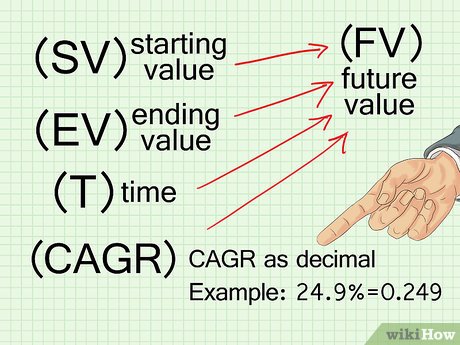Navigating Success: A Comprehensive Guide on How to Calculate Cumulative Growth

Introduction
In the realm of business and finance, understanding the trajectory of growth over time is essential for making informed decisions and assessing performance. Cumulative growth, a key metric, provides a comprehensive view of the accumulated changes in a quantity or variable. This extensive guide will delve into the intricacies of calculating cumulative growth, exploring its significance, formula variations, practical applications, and tips for interpretation.
Section 1: The Significance of Cumulative Growth
1.1 Definition and Concept
Cumulative growth is a measure that reflects the total percentage change in a variable over a specific period. It considers the cumulative effect of growth or decline, offering a holistic perspective on how a quantity has evolved over time. This metric is widely used in finance, economics, and business analytics to analyze trends, track investment performance, and assess the overall progress of a business or project.
1.2 Importance in Decision-Making
Understanding cumulative growth is crucial for decision-makers in various fields. It aids in evaluating the success of strategies, identifying patterns, and predicting future trends. Whether assessing the growth of a financial investment, analyzing revenue over multiple periods, or tracking user engagement in a digital platform, cumulative growth provides valuable insights for strategic planning and decision-making.
Section 2: Formula for Calculating Cumulative Growth
2.1 Basic Cumulative Growth Formula
The basic formula for calculating cumulative growth is straightforward and involves two key variables: the initial value (often denoted as V_0V0) and the final value (often denoted as V_tVt) at the end of the specified period.
Cumulative \, Growth = \left( \frac{V_t – V_0}{V_0} \right) \times 100CumulativeGrowth=(V0Vt−V0)×100
This formula yields the cumulative growth rate as a percentage.
2.2 Example Calculation
Consider a business that started with a revenue of $100,000 (V_0V0) and, after a year, achieved a revenue of $150,000 (V_tVt). Applying the basic formula:
Cumulative \, Growth = \left( \frac{150,000 – 100,000}{100,000} \right) \times 100 = 50\%CumulativeGrowth=(100,000150,000−100,000)×100=50%
The cumulative growth rate in this example is 50%, indicating a 50% increase in revenue over the specified period.
Section 3: Variations of Cumulative Growth Formulas
3.1 Cumulative Growth Rate (CAGR)
The Cumulative Annual Growth Rate (CAGR) is a variant of cumulative growth that provides a smoothed annualized growth rate over a multi-year period. The formula for CAGR is:
CAGR = \left( \frac{V_t}{V_0} \right)^{\frac{1}{n}} – 1CAGR=(V0Vt)n1−1
Where:
- V_tVt is the final value.
- V_0V0 is the initial value.
- nn is the number of years.
CAGR offers a more stable representation of growth, especially when dealing with periods of fluctuating values.
Section 4: Practical Applications of Cumulative Growth
4.1 Financial Performance Analysis
In finance, cumulative growth is widely used to assess the performance of investments, portfolios, and financial assets. It provides investors and analysts with a clear picture of the overall return on investment over a specific period.
4.2 Revenue and Sales Tracking
Businesses utilize cumulative growth to evaluate the success of their revenue and sales strategies. Tracking cumulative growth in these areas helps identify trends, assess marketing campaigns, and guide future business decisions.
4.3 Population and Demographic Studies
Demographers and social scientists use cumulative growth to analyze population trends over time. This is particularly valuable for understanding the growth or decline of populations and making informed projections.
4.4 Digital Metrics and User Engagement
In the realm of digital platforms, cumulative growth is applied to metrics such as user engagement, app downloads, or website visits. This helps businesses gauge the success of their digital strategies and make data-driven decisions for improvements.
Section 5: Tips for Interpretation
5.1 Consider the Time Frame
When interpreting cumulative growth, it’s crucial to consider the time frame over which the growth is calculated. Short-term and long-term growth rates may vary significantly, impacting the conclusions drawn from the analysis.
5.2 Compare Against Benchmarks
To contextualize cumulative growth, compare it against industry benchmarks, competitors, or internal targets. This comparative analysis provides a more meaningful assessment of performance.
5.3 Be Mindful of Limitations
While cumulative growth is a valuable metric, it has limitations. It may not account for external factors, economic changes, or shifts in consumer behavior. Interpret results with an awareness of these potential limitations.
5.4 Utilize Additional Metrics
Cumulative growth is most insightful when used in conjunction with other relevant metrics. Complementing it with metrics such as average growth rate, return on investment (ROI), or profitability ratios enhances the depth of analysis.
Conclusion
In conclusion, calculating cumulative growth is an integral aspect of performance analysis and strategic decision-making in various domains. Whether evaluating financial investments, tracking revenue trends, or assessing user engagement, cumulative growth offers a holistic perspective on how a quantity has evolved over time. By understanding the significance of cumulative growth, mastering its formulas, and applying it judiciously to diverse scenarios, businesses and analysts can unlock valuable insights for informed decision-making and future planning. In the dynamic landscape of finance and business, navigating success requires a keen grasp of cumulative growth and its applications.




